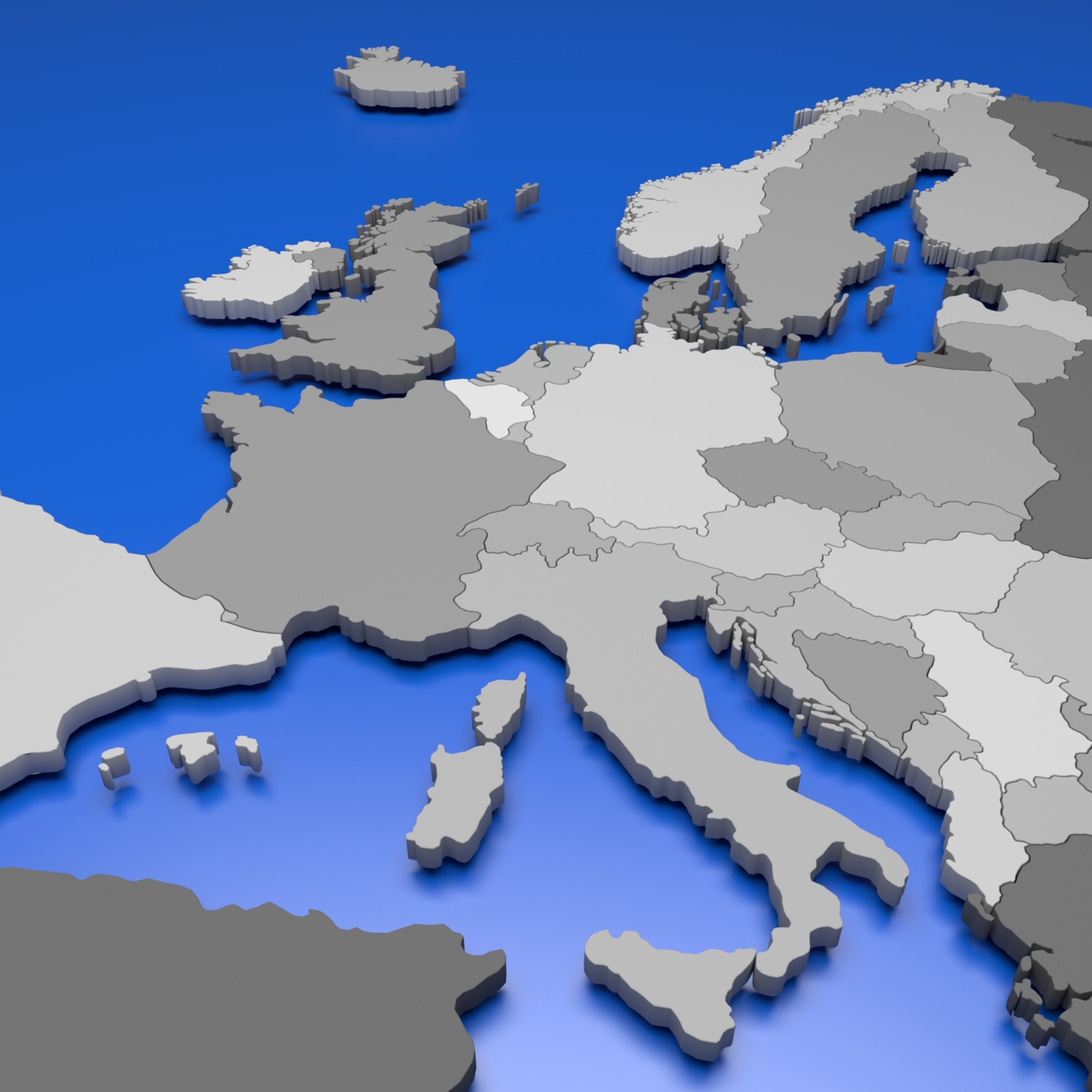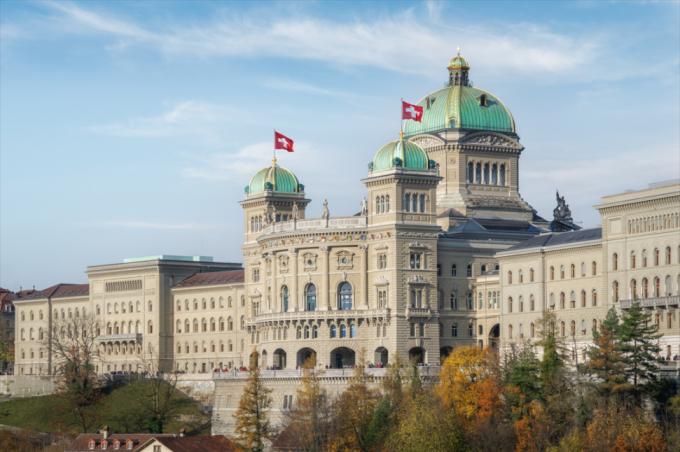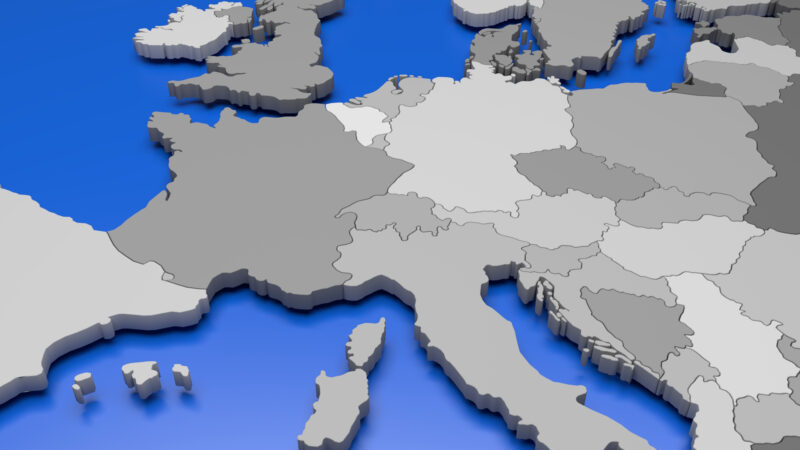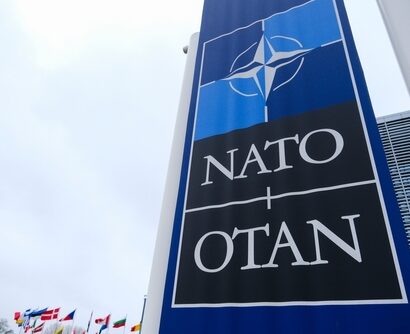Abstract: This contribution brings together the perspective of four academics originating from Austria, Finland and Switzerland who tried, in a hearing before the Swiss Parliament on September 08, 2022, to engage in a stock-taking as to the status of neutrality law in the countries where they are working. Although their perspective on neutrality is not uniform, the individual contributions together demonstrate that the law of neutrality has undergone profound changes since WWII. Ultimately, the Ukraine crisis has urged governments of neutral countries to reconsider their position as to this status. Comparative studies might be useful to develop perspectives more in line with modern international law and, in particular, with the obligation, valid also for neutrals, to contribute adequately to the preservation of the international peace system.
Problem statement: How should neutral countries respond to threats to international peace and stability, such as the Russian aggression against Ukraine, to contribute adequately to the preservation of the international peace system?
Bottom-line-up-front: Few comparative studies on the modern law of neutrality have recently been done. It is time to change this as new international challenges are also requiring neutral status to reconsider their position.
So what?: More comparative studies are needed. If there is an international solidarity law, neutrals must contribute adequately.

Source: shutterstock.com/MaleWitch
Neutrality’s Significance[1]
Neutrality law, once a prominent sub-discipline of international law, has since long receded into the academic discussion background. Nonetheless, in several countries worldwide and in Europe, rules on neutrality are still there, whatever their actual foundation in international law. It may be true that on the factual level, provisions on neutrality display their main importance internally of the State. Still, their formal ambition is primarily directed at regulating international relations.
While being highly prominent in the international legal order of the 19th century and in the first years of the 20th century, after WWI, the law of neutrality was in turmoil. After WWII, the question arose whether neutrality still had any significance in international law, especially from the perspective of UN law. For various reasons, some countries continued to hold firm on their neutrality status, even though difficulties in reconciling this status with general international law had become ever more glaring.
After WWII, the question arose whether neutrality still had any significance in international law, especially from the perspective of UN law.
The Ukraine war, which received full international attention with the Russian attack of February 24, 2022, posed a new challenge to the concept of neutrality, with some countries definitely abandoning neutrality for good (like Finland) while other countries, like Austria and Switzerland, an intense discussion on the present status and the prospect of the neutrality status (re-)started.
This seems to be a good occasion to compare the relevant discussion in Austria, Finland, and in Switzerland with the intent to examine whether common traits in this discussion could be found that could be seen as a proof that some traits of neutrality law are still there in international law and continue to be relevant also from a strictly legal perspective.
Austria´s Neutrality Law[2]
Austria is a late-comer in the club of the neutrals, adopting this status at a time when many traditional neutrals of the past had already abandoned it. The fact that Austria opted for neutrality in 1955 can only be understood out of the specific political circumstances of that area overshadowed by the Cold War. On April 15, 1955, an Austrian governmental delegation negotiated the future State Treaty in Moscow obliged themselves to make sure that Austria would promise “internationally to practice perpetually a neutrality of the type maintained by Switzerland”. According to, for example, Stephan Verosta, Austrian Legal Adviser at that time, this was only a kind of “gentlemen´s agreement”, obliging Austrian politicians but not Austria as a State.
In a legal sense, Austrian neutrality was introduced only five months later by the Federal Constitutional Law of October 26, 1955, applauded by the Austrian people, which no longer referred to Swiss neutrality. According to the official Austrian position, neutrality was not imposed but freely chosen by national law. It was subsequently given international relevance by the notification of this act to all States with which Austria had diplomatic relations at the time. The majority of these States directly or implicitly recognized this neutrality, while a few States did not respond. According to this construction, mostly ignored outside Austria, Austria thought to have it both ways: Neutrality as a freely chosen international obligation which could, therefore, also be rescinded at any time.
In the first years after 1955, little attention was paid to the neutrality issue. In the 1960s, however, this status was taken recourse to justify a somewhat isolationist and protectionist foreign policy.[3] More and more neutrality became part of the Austrian identity. When it stood in the way of the accession to the EU, which was retained to be advantageous when the Cold War ended in 1989, Austrian had no problems introducing a constitutional amendment (Article 23f B-VG, later becoming Article 23j B-VG) according to which this country would fully accept the obligations flowing from the Common Foreign and Security Policy (CFSP). The neutrality act of 1955, a constitutional law, was thereby largely superseded and derogated. While Austria did not succeed in its attempt to obtain a “neutrality exception” from the European Union, Ireland, also a neutral state, managed to obtain a concession according to which the “obligation of [military] assistance” “shall not prejudice the specific character of the security and defense policy of certain Member States” (Art. 42 para. 7 of the EU treaty). Of course, also Austria can take recourse to this “Irish clause” and “abstain constructively”, which means that solidarity obligations in the first line consisting of non-military efforts.
In the 1990s, intense debates were ongoing in Austria on officially declaring neutrality as terminated. In the early 2000s, however, it had become clear that the Austrian electorate wanted to stick to neutrality, whatever its practical meaning and legal foundations. Politics adapted to these wishes they have earlier contributed to, decisively came into being.
Austria is now cooperating intensively in building a Common Security and Defense Policy (CSDP) and directly with NATO.[4] The Russian aggression against Ukraine has posed new challenges to Austria´s perception as neutral. In fact, Austria is not only fully participating in sanctions against Russia but also fully contributing to aid projects in favour of Ukraine on the basis of the so-called “European Peace Facility” of 2021. On the face, a way out of this dilemma was found by giving contributions only for assistance not associated with the employment of “lethal force” but in the end, this may not have any meaning in substance: What neutrals are spending less for one kind of aid, non-neutrals are spending more and vice versa.
Austria is now cooperating intensively in building a Common Security and Defense Policy (CSDP) and directly with NATO.
For long, the prevailing doctrine has demonstrated that there is no longer any substance in Austrian neutrality law, but politics – and large parts of the Austrian population- continue to ignore this. As this author has repeatedly underscored, unfortunately, often pivotal international and European law rules are not fully lived up to in Austria.[5] It would be an essential task of academia to bridge this gap between law on the books and law in action.[6]
Swiss Neutrality
The Mask of Swiss Neutrality: A Historical Perspective[7]
The issue of neutrality is back in the debate today: this is no accident. Neutrality is, above all, a wartime policy. During tragic events, the question of Switzerland’s international position arises, whether it is in relation to the war in Ukraine, to the belligerents, or other countries and other organizations such as the European Union and NATO.
The very limited neutrality law allows a wide margin of interpretation. In 1920, for example, the Federal Council believed that neutral Switzerland should join the League of Nations, followed by 56% of the population and 13 cantons, some with overwhelming majorities: 93% in the canton of Vaud, 84% in the canton of Neuchâtel. In 1938, the Federal Council did an about-face. It reverted to so-called full neutrality: in its analysis, neutrality had become incompatible with the collective security of the League of Nations. Two diametrically opposed interpretations of the role of neutrality. However, Switzerland always remained officially neutral…
It is to be highlighted that the debate on neutrality often masks other debates on foreign policy and its interpretation. The policy of neutrality is, in fact, constantly adapted to the ‘practical realities’, i.e., trade relations, and financial affairs, according to its geographical position in the center of Europe.
The debate on neutrality also became a question of identity and image. Today the Swiss are attached to neutrality. This is what the polls show: since the 1970s, polls have consistently shown that the Swiss were attached to this principle, which is part of their identity. This consensus masks disagreements on issues other than neutrality: the interpretation of history and foreign policy, which is very divisive. Today the question of the relations between Switzerland and the European Union is the most striking example.
Since the beginning of the 20th century, three main phases can be distinguished, reinforcing the idea that Switzerland is almost naturally neutral and belongs to the national identity. Roughly speaking, it can be said that until the First World War, neutrality was not a deeply rooted value among the population.
In the face of the propaganda of the belligerents and to overcome internal divisions, the authorities developed an intense communication campaign on neutrality: it is defended by a strong army; it is good for the world; it is an ancestral, organic value, necessary for Switzerland.
Through a political discourse based on several strategies, an image was created of Switzerland that was spared like the snow-covered peaks and active on the humanitarian field. Neutrality is said to be the decisive factor that spared Switzerland the suffering of war. In fact, neutrality made it possible to continue trading with the belligerents, respond to criticism by emphasizing humanitarian policy, and diminish differences within the country.
Second phase. On the eve of the Second World War, the Federal Council returned to ‘complete neutrality’, given the fear of a direct external threat. At the same time, the Federal Council launched an extensive cultural policy program, the ‘spiritual national defense’, which aimed to spread the image of Switzerland that preferred to stay out of world affairs, both in Switzerland and abroad. Neutrality is no longer a means to an end, as the constitution requires, but an end. The army defends Switzerland’s neutrality, not its independence, against external threats. Neutrality becomes almost a religious dogma.
This attitude in Swiss foreign policy, symbolized by the hedgehog, continued after the Second World War, during the Cold War. At that time, Switzerland was no longer between two rival powers – France and Germany – and the aim was to join the Western camp and let economic interests develop with minimal obstacles.
Finally, in the third phase, for Switzerland, the fall of the USSR was not the end of history but the end of a certain world. Much of Switzerland’s foreign policy was influenced by the fear of communism. It was, therefore, a period of uncertainty but also of regret: the Cold War was ultimately a comfortable configuration: ideological alignment with the Western camp and respect for neutrality by the two great powers.
Much of Switzerland’s foreign policy was influenced by the fear of communism.
Faced with the uncertainties of the future, the Federal Council moved closer to the UN. This organization had been the least shaken after 1989 and aligned itself with the resumption of sanctions in the case of the war in Iraq. Switzerland takes over all sanctions, and the main argument in the 2002 campaign for Switzerland’s entry into the UN is that the objectives of the UN and Switzerland are similar. Collective security through the Western-dominated UN becomes a credible alternative to full neutrality. The report of the Neutrality Study Group, published in 1993, goes so far as to write: ‘In the future, neutrality should no longer be the focus of foreign policy concerns.’
In the current debate on neutrality, there are differences of opinion. However, the debate on neutrality hides many of the issues discussed in connection with the war in Ukraine. When we talk about collaborative neutrality, it is not neutrality that is at stake, but with whom Switzerland wishes to collaborate, and if so, to what degree? These are foreign policy issues, of which neutrality is only one of many levers.

Source: shutterstock.com/Diego Grandi
Swiss Neutrality from an International Law Perspective[8]
First, it has to be admitted that since the prohibition of the use of force between States, at the latest in the UN Charter in 1945, neutrality does not fit well into contemporary public international law and the collective security system envisaged, but unfortunately not yet realized by the UN Charter. Indeed, neutrality, by definition, only applies between a State having violated the prohibition of using force and the victim of that violation. Those who, in the current Swiss public debate triggered by the war in Ukraine, consider that in the face of violations of public international law, there can be no neutrality must perforce abandon neutrality. It only applies in case of such a violation.
Second, it has to be recalled that neutrality only applies during an international armed conflict between two States. It obliges the neutral State not to participate in hostilities, not to tolerate the presence or transit of belligerent troops, and not to export war material to belligerent States. Under the wording of the 1907 Hague Convention XIII, this concerns only State-exports, and this is still the interpretation of the Swiss government, while a majority of scholars argue that it must also cover private exports because private arms trade is and must today be subject to strict State regulation and permission. Anyway, if a State regulates private exports – as Switzerland does, it must treat both sides equally. Finally, the permanently neutral State may not undertake peacetime obligations, e.g., in alliances such as NATO, that oblige it in wartime to violate its obligations as a neutral State. The main right of a neutral state that its territorial sovereignty is respected today benefits all states except an aggressor state.
Third, the separation between neutrality policy and neutrality laws, so dear to the Swiss, must be relativized, as the chances to be respected by belligerents in a future conflict depends more on the credibility and predictability of the neutrality policy of a permanently neutral State like Switzerland than on its mere respect of the law of neutrality in a given conflict.
Fourth, it has to be examined whether Switzerland has an obligation to be neutral. It is opined here that this is not the case. State practice after February 24, 2022, shows that States do not necessarily have the obligations of a neutral State if they do not participate in an armed conflict. Admittedly, great powers, including Russia, guaranteed in 1815 at the Congress of Vienna Switzerland’s “perpetual” neutrality, which happened at Switzerland’s request. This could constitute an implicit agreement. Nevertheless, it can be argued that the UN Charter implicitly abolished such an obligation. However, the Swiss constitution must be amended to abandon neutrality, although it mentions “taking measures to safeguard […] neutrality” only among the “duties and powers” of government and parliament.
Fifth, here, the idea of abandoning neutrality is nevertheless opposed. This should certainly not be done hastily because of Russia’s aggression on Ukraine, which is not unique. Neutrality facilitates offering good offices, including the role of “international Geneva”. It traditionally contributes to peace if it is known that one State will never use force except if it is individually attacked. Neutrality is profoundly anchored in the self-perception of the Swiss people. They are convinced that it preserved them from the horrors of three major wars in Europe during the last 150 years. Finally, neutrality also decisively contributes to the particularity of Switzerland, in particular in the eyes of public opinion in the Global South.
Sixth, as for the idea of redefining neutrality by exceptions, this would weaken the predictability of Swiss neutrality for prospective belligerents because they would not know how the government would interpret them in their case and subject the Swiss government to pressure by belligerents to adopt their views on whether their use of force is justified, which would result for economic and geopolitical reasons in double standards.
Neutrality in Finland post-1945[9]
Starting Points
Origins of neutrality in Finland are not limited to the post-1945 era only. Officially, however, neutrality was never adopted as a policy until 1935, when it was chosen to strengthen Finland’s Scandinavian orientation in the face of deteriorating European security. This last-minute neutrality fell when the Soviet Union attacked Finland in 1938 and in the following wars against the Soviet Union that Finland fought in alliance with Germany in 1941-1944.
Origins of neutrality in Finland are not limited to the post-1945 era only. Officially, however, neutrality was never adopted as a policy until 1935, when it was chosen to strengthen Finland’s Scandinavian orientation in the face of deteriorating European security.
Besides the Paris Peace Treaty (1947), a key document that shaped the post-1945 policy-making in Finland was the Treaty on Friendship, Cooperation, and Mutual Assistance (FCMA), which concluded between the Soviet Union and Finland in the spring of 1948. While the Soviet Union had already promoted this type of bilateral security pact treaty before the wars, Finland only now agreed. According to the first article of the treaty, “Finland, or the Soviet Union through Finnish territory, becoming object of an armed attack by Germany or any other state allied with the latter” would be obliged “true to its obligations as an independent state to fight to repel the attack”. Moreover, Finland agreed to defend its own territory, “if necessary”, with the assistance of or jointly with the Soviet Union; these military means had to be preceded by mutual political consultations.
Finland’s desire to remain “outside the conflicting interests of the Great Powers” was included in the treaty preamble. The cautious reference indicated a wish for a re-try of the 1930s policy of neutrality, the one that “most of the small states”, in the words of President Paasikivi, “try to follow,” even in cases that do “not quite fit with the handbooks of international law.” A turning point that opened new, primarily political leeway for Finland’s neutrality came in 1955, in connection with the super-power compromise on the restoration of Austria’s state sovereignty, its territorial unity and, as declared through Austria’s Parliament, the adoption of neutrality. Now Finland too started elaborating its desired policies of neutrality in a more outspoken, systematic manner. In the model of neutral Sweden, Finland and Austria joined the United Nations. At the same time, the Soviet Union and Finland agreed on prolonging the bilateral FCMA treaty, the treaty, this time, being supported by a mutual declaration that issued an explicit recognition of and the Soviet Union’s respect for Finland’s wish to follow a policy of neutrality.
Challenges
1955 was a breakthrough year for Finland’s (reborn) neutrality. The achievement proved a double-edged sword, however. In the longer run, the events of 1955 proved to have established a political interconnection between the renewing of the FCMA treaty and the renewing of the Soviet recognition of and respect for Finland’s neutrality that proved difficult to reverse. As a result, Finland’s interpretations of neutrality became linked with the documentation of the Soviet recognition and respect for that neutrality that, in turn, could be achieved through the renewal of the bilateral security treaties.
The interdependence established in 1955 shadowed Finland’s pursuit of neutrality until the dissolution of the Soviet Union. Moreover, while the Soviet Union had approved, if not even supported, the idea of (also) Finland’s neutrality in 1955, by the mid-1960s, it had grown reserved. By the end of the 1960s, the stance was outright negative. The Soviet Union ceased to issue its “recognition of” and “respect for” Finland’s neutrality. The word neutrality did not return to the vocabulary of Finn-Soviet relations until 1989.
What the most ambitious architects of Finland’s neutrality had in mind since the 1960s was a rather systematic, comprehensive model of (armed) neutrality (à la Switzerland) combined with active, constructive contributions through the multilateral diplomatic arenas such as the UN (à la Sweden). In the Soviet eyes, Finland was starting to emphasize neutrality in ways that risked its commitments to the FCMA treaty obligations.
The mere possibility of the Soviet Union calling Finland upon the FCMA-related consultations was a tool that narrowed down Finland’s political room of manoeuvre. The attempt to avoid any doubts arising on the Soviet side was soon inbuilt. They were at the core of the so-called “Finlandization” debates – pointing analytically to a smaller player’s tendency to adapt its own politics and action in accordance with or under the pressure of a bigger one. What, from some perspectives, started as relatively earnest strategies of self-restraint and self-defense turned, in the longer run, to an ever more internalized tendency to pre-anticipate the external (Soviet) stances. By the 1970s, trustworthiness/non-trustworthiness in the Soviet eyes had become an instrument of domestic political power battles inside Finland. Resources for a democratically sustainable dealing with the fragmenting even polarizing consequences of the external pressures on domestic society and politics proved limited. As a result, power was increasingly concentrated in the 1970s in the hands of long-time President Urho Kekkonen.
Gains
During Cold War, Finland’s pursuit of the policy of neutrality was demanding in both international and domestic terms. Yet, neutrality as a tool of diplomacy and foreign policy also served Finland remarkably well. Through the United Nations, in particular, a poor, peripheral and war-ridden border country managed to build itself a globally known profile as a societally fair and egalitarian Nordic society and as one among the other European (stable, democratic) neutrals. Representatives from these countries, including Finland, served as meeting hosts and mediators in challenging questions and conflicts of the Cold War world. On the European scene, the landmark was the Conference on Security and Cooperation in Europe (CSCE, OSCE).
Besides contributing to Finland’s image and agency in multilateral arenas, the toolkits of neutrality served well in maintaining and rebuilding the ethos and institutions of independent national defense in domestic society. For a country that had mobilized its entire society and population in the wars against the Soviet Union, the realities of post-war Soviet relations could have been extremely difficult to deal with. Here the Swiss model of armed neutrality, updated in the early 1950s to correspond with the realities of the Cold War, came to aid. Ideas of armed neutrality, conscription, and comprehensive defense provided bridges from war to peace, from total war to armed forces of a democratic society. A need for a total, potentially demoralizing, and politically possibly exploitable break with the past was effectively avoided.
Besides contributing to Finland’s image and agency in multilateral arenas, the toolkits of neutrality served well in maintaining and rebuilding the ethos and institutions of independent national defense in domestic society.
Beyond the Cold War
When Finland joined the European Union in 1995, together with the two “former neutrals” Austria and Sweden, it was the most willing of the three to put an end to the policy of neutrality. To indicate the wholeheartedness of Finland’s political alignment with the European Union, the concept of neutrality was erased from the public policy vocabulary. The move sent a message also to domestic politics: there was no way back to Finland of the Cold War years, where external (Soviet) pressures and influences too eagerly were also instrumentalized in domestic politics. On a closer look, the erasing of the term neutrality mostly served the purpose of putting an end to Finlandization. This phenomenon was less acutely present in the two other new EU member states.
Yet post-1995, Finland, in unison with the two other new EU members, did not choose to align militarily. Despite the tightening cooperation with NATO, all three held this line through several NATO Eastern enlargements. After almost thirty years, following Russia’s attack on Ukraine in 2022, Finland and Sweden decided to apply for full NATO membership.
As for Finland, the strong rejection of the word neutrality (as a political concept) combined, nevertheless, with the remaining outside of the military alliances – understood, in many parts of the world, as neutrality – has not always been easy to comprehend nor to explain. A look at the history of Finland’s Cold War neutrality, its main areas of weakness, pressures, and gains, can provide some assistance.
The pressures and weaknesses boiled down, above all, to neutrality’s unhappy, de facto dependence on the wordings of the documents of bilateral Soviet relations and the politics around the FCMA treaty obligations. On the other hand, the gains are located mainly in two policy fields. In the arenas of multilateral diplomacy, especially in the UN-related missions of mediation, arms control peacekeeping/peacebuilding, and the provision of good services, neutral Finland built itself a widely recognized profile and respected agency that has been carefully cultivated beyond the Cold War. On the other hand, the ideas of armed neutrality were highly useful for maintaining the ethos and institutions of independent national defense during the otherwise strained Cold War decades. In neither of these fields, the well-established and well-functioning practices have been entirely cut down in a similarly total manner as happened at the level of political, EU-related vocabularies. Instead, many positive continuities have helped bridge institutionally and domestically anchored transitions from one era to another. Moreover, in preparing for a full NATO membership, Finland’s contributions to multilateral, rule-based international order and, especially, its societally embedded national defense ethos, general (male) conscription, and structures of “comprehensive security” have been brought up in many connections as major strengths of Finland as a future NATO ally.
Conclusions
This contribution brings together the perspective of four academics originating from Austria, Finland, and Switzerland who tried, in a hearing before the Swiss Parliament on September 8, 2022, to engage in a stock-taking as to the status of neutrality law in the countries where they are working. They authored individual paragraphs of this contribution. Although their perspective on neutrality is not uniform, the individual contributions read together to demonstrate that the law of neutrality has undergone profound changes since WWII. As far as individual countries continue to stick at all to this concept, the respective national societies have developed disparate perspectives for which it is difficult to find a common international law premise. The relevant discussion is conducted primarily before a national public; there is next to no international exchange in this regard. The Berne hearing could be considered an attempt to change this situation. No doubt: As long as neutrality issues have repercussions primarily on internal political decisions, such an international comparison may not be politically urgent, even though it remains, in any case, academically interesting. In recent times, however, neutrality aspects have become more and more relevant for national decisions with international (law) consequences. The Ukraine crisis and the measures taken in this regard (in particular sanctions) are important examples in kind. It might be useful to continue this discussion and this comparison to develop modern perspectives of neutrality. This is also true in view of the following pivotal proposition: If there is an international law of solidarity,[10] also neutrals have to contribute adequately to preserving a peace system they are directly benefitting from.
As long as neutrality issues have repercussions primarily on internal political decisions, such an international comparison may not be politically urgent, even though it remains, in any case, academically interesting.
Peter Hilpold, Professor of International Law, European Law and Public Comparative Law at the University of Innsbruck, together with Matthieu Gillabert, Professor of Contemporary History at the University of Fribourg, Johanna Rainio-Niemi, Professor of Political History at the University of Helsinki and Marco Sassòli, Professor of International Law at the University of Geneva. The views contained in this article are the authors’ alone.
[1] The introduction, the conclusions and the paragraph on Austria were written by Peter Hilpold.
[2] This part draws mainly on Peter Hilpold, Solidarität und Neutralität im Vertrag von Lissabon, Wien, Baden-Baden, Bern: facultas, Nomos, Stämpfli Verlag, 2010; Peter Hilpold, “How to Construe a Myth: Neutrality within the United Nations System Under Special Consideration of the Austrian Case,” 18 Chinese Journal of International Law 2019, 247-279; and Peter Hilpold, „Das Neutralitätsrecht Österreichs und der Schweiz im “weiten Feld” des Internationalen Rechts – Aktuelle Entwicklungen im Vergleich,” Archiv des Völkerrechts (forthcoming).
[3] Paul Luif, Der Wandel der österreichischen Neutralität. Ist Österreich ein sicherheitspolitischer „Trittbrettfahrer“?, 2nd ed. (Vienna: Braumüller, 1998), 23-24.
[4] See for more detail Gerhard Jandl, „Neutralität und österreichische Sicherheitspolitik,“ in Die österreichische Neutralität – Chimäre oder Wirklichkeit?, ed. Gerald Schöpfer (Graz: Leykam, 2015), 199.
[5] Peter Hilpold, „Ringen um europäische Werte – Österreich in der EU,“ in Rechtsstaatlichkeit, Grundrechte und Solidarität in Österreich und in Europa – Festgabe zum 85. Geburtstag von Professor Heinrich Neisser, einem europäischen Humanisten, ed. with Andreas Raffeiner and Walter Steinmair (Wien: facultas: 2021), 262-298.
[6] Peter Hilpold, “Teaching International Law in the 21th Century – Opening up the Hidden Room in the Palace of International Law,” SSRN, April 27, 2022, https://papers.ssrn.com/sol3/papers.cfm?abstract_id=4081412.
[7] This paragraph was written by Matthieu Gillabert.
[8] This paragraph was written by Marco Sassòli.
[9] The paragraph was prepared by Johanna Rainio-Niemi.
[10] Peter Hilpold, “Understanding Solidarity within EU Law: An Analysis of the ‘Islands of Solidarity’ with Particular Regard to Monetary Union,” 34 Yearbook of European Law 2015, 257-285.





